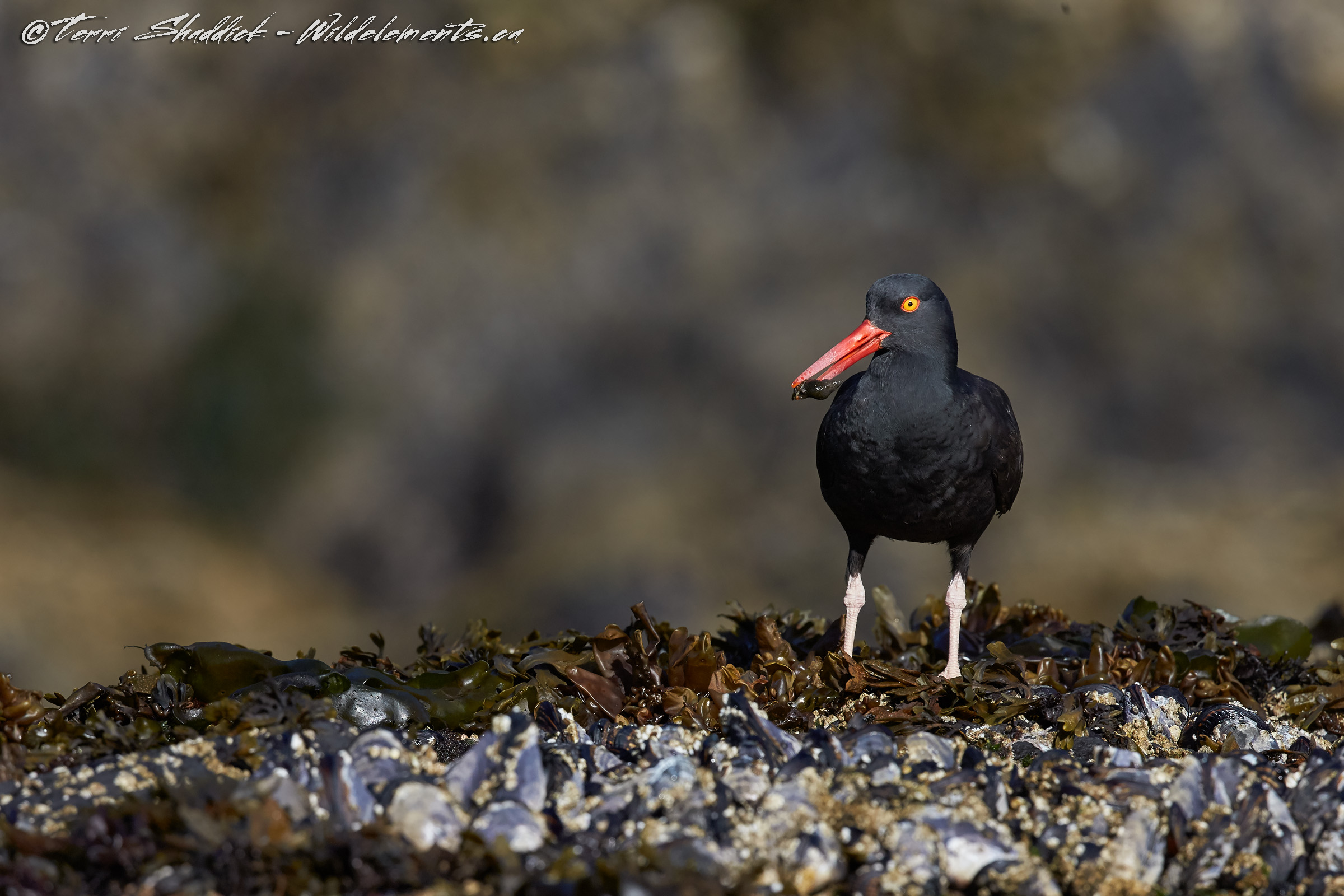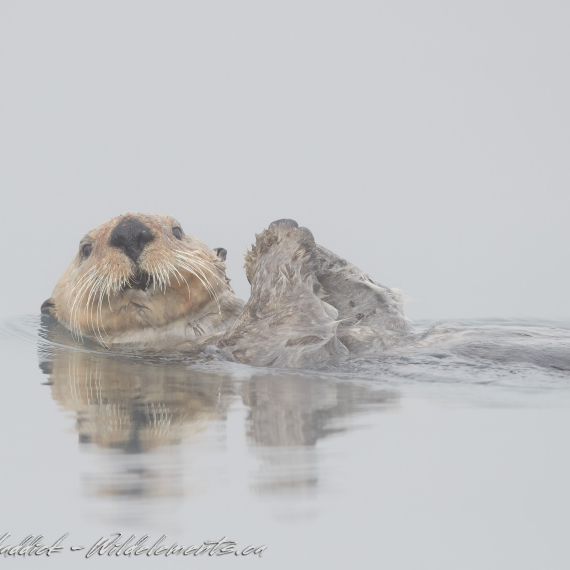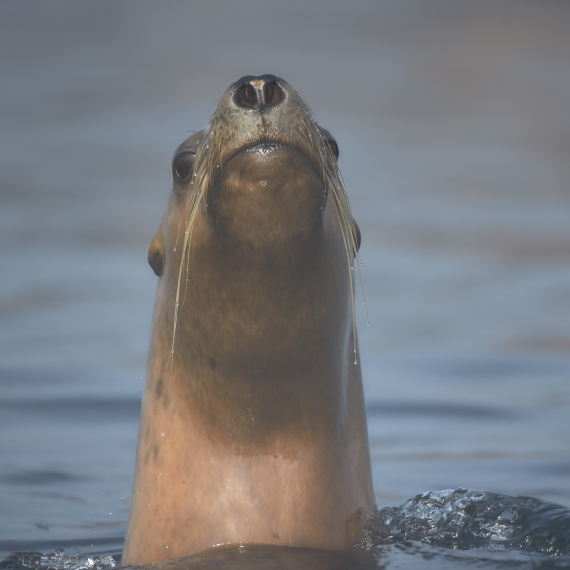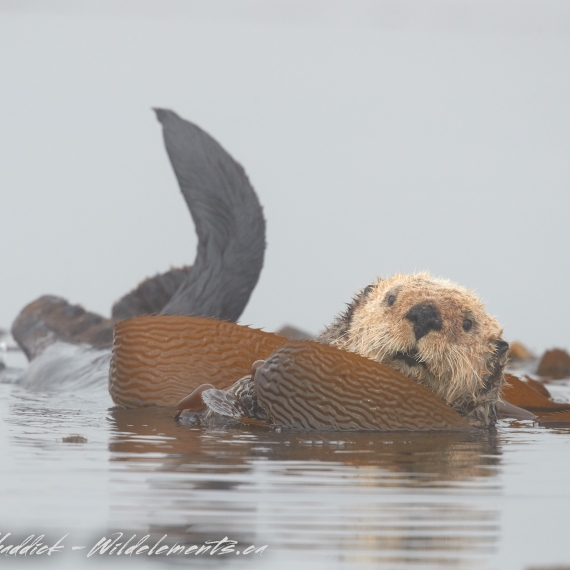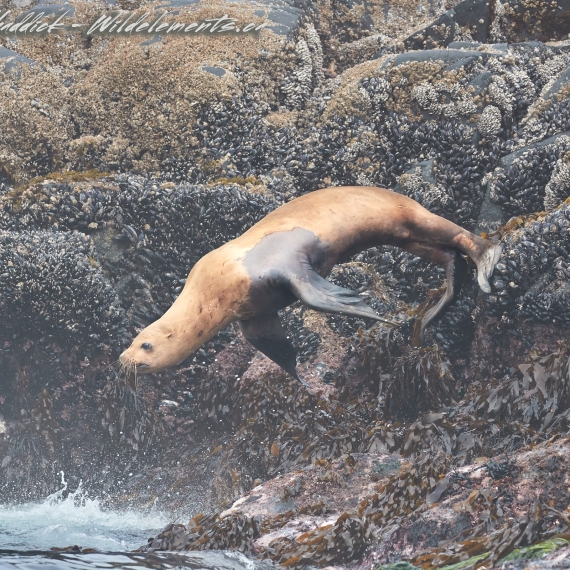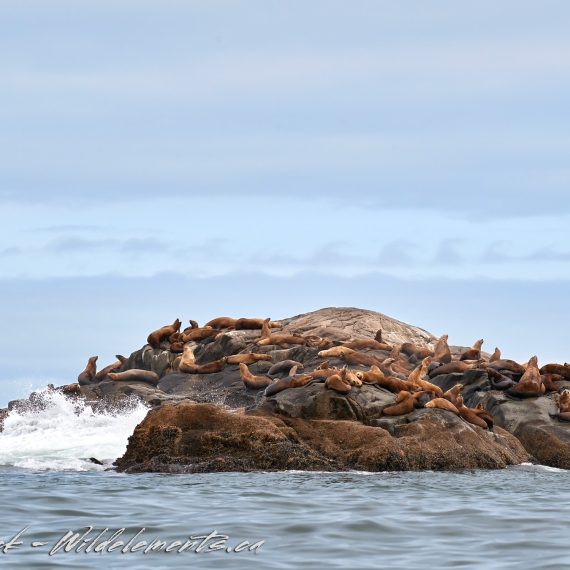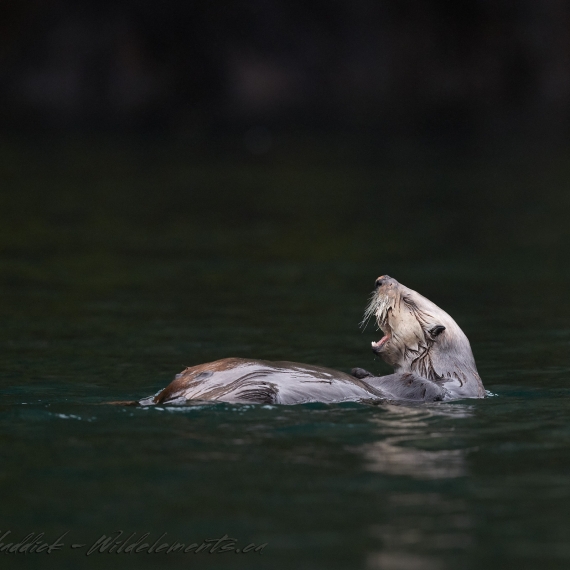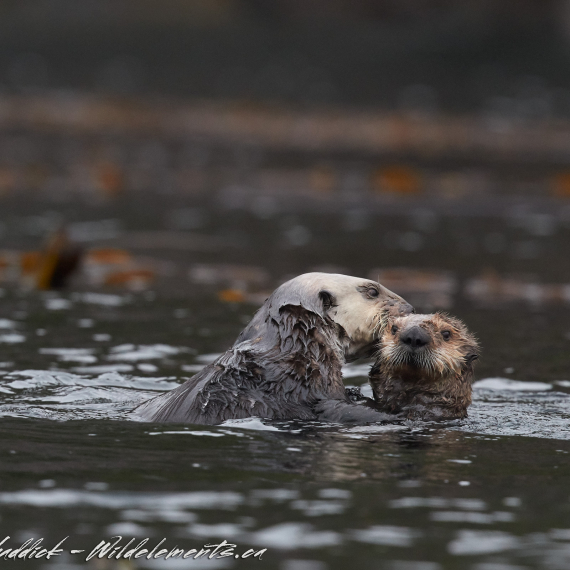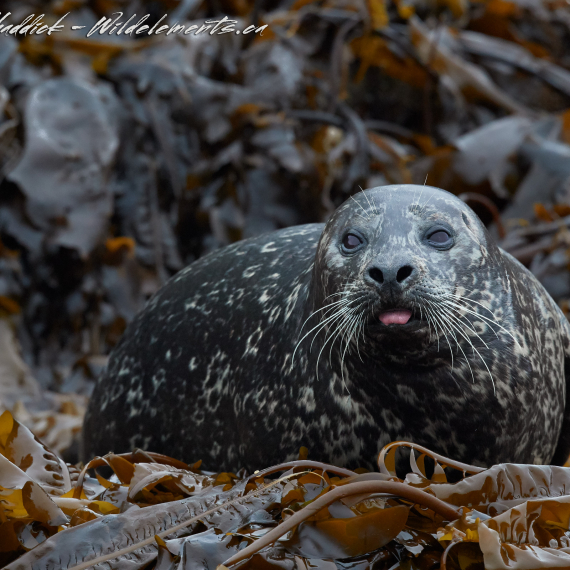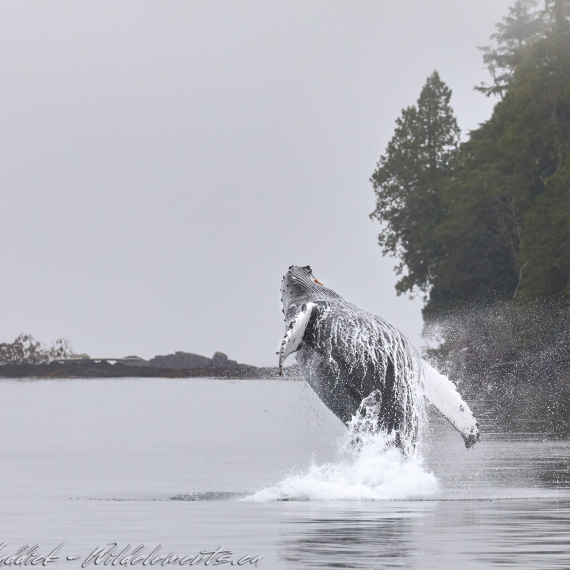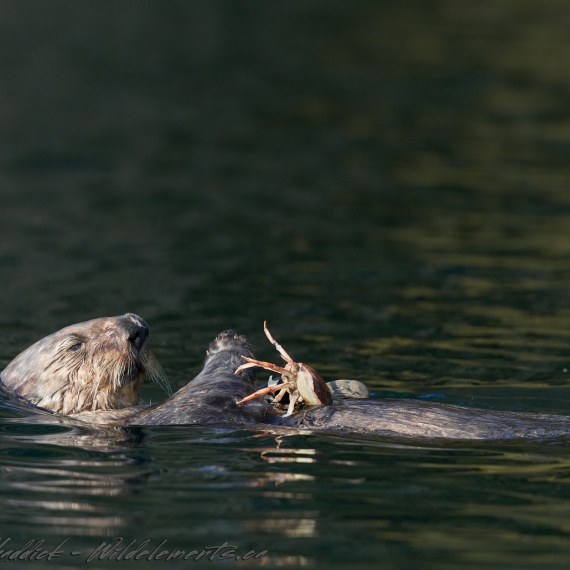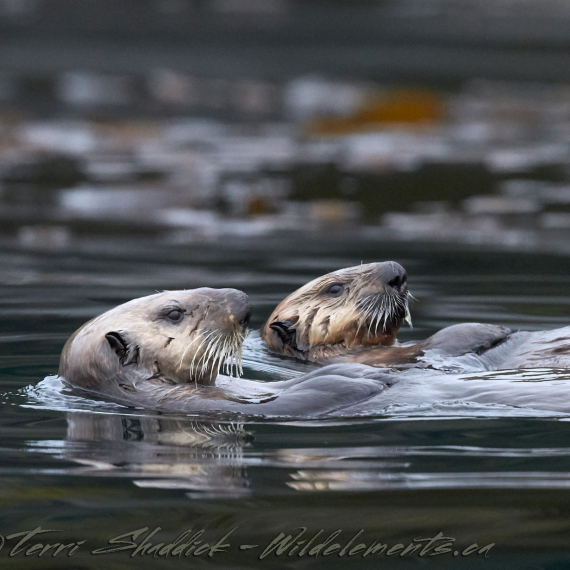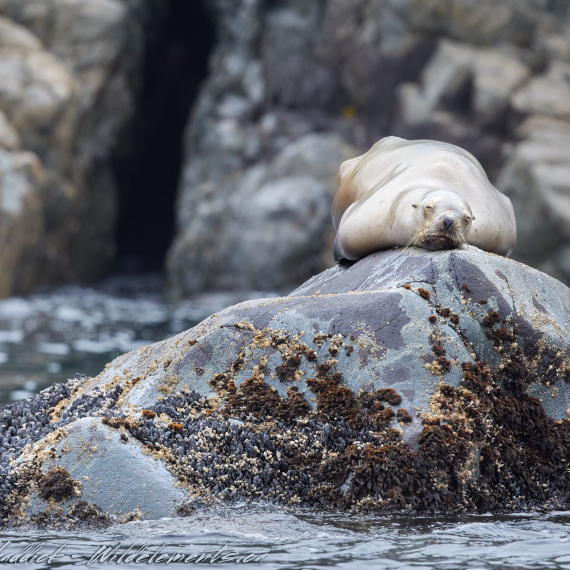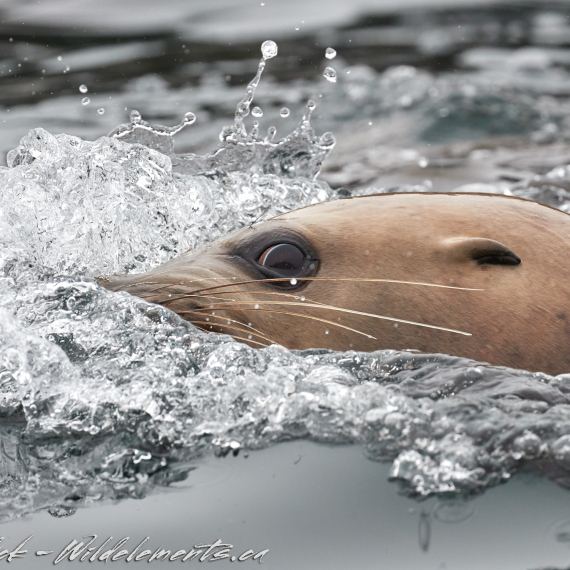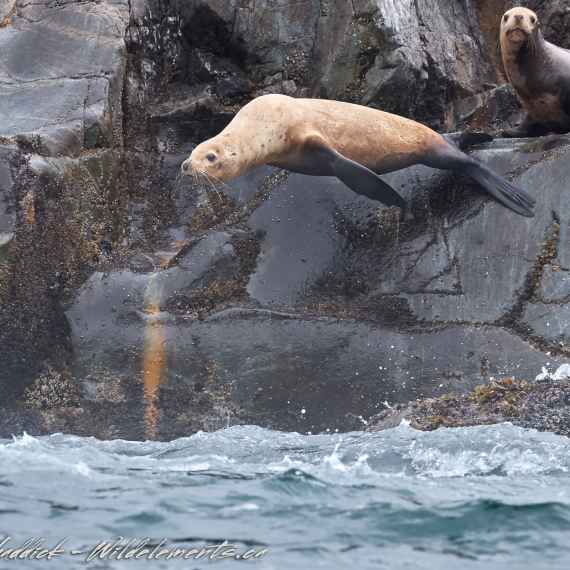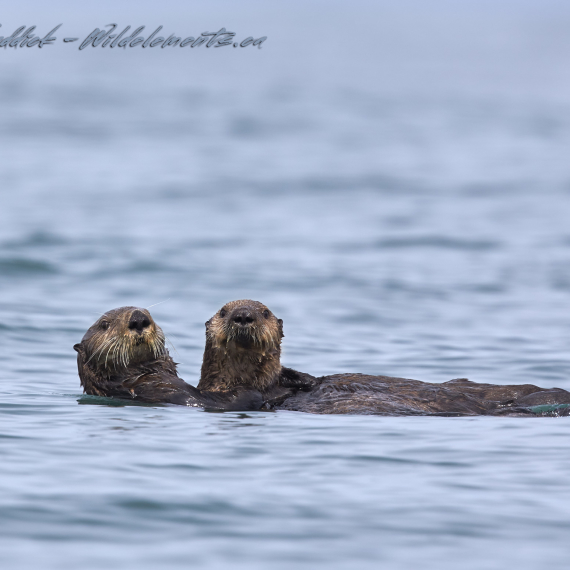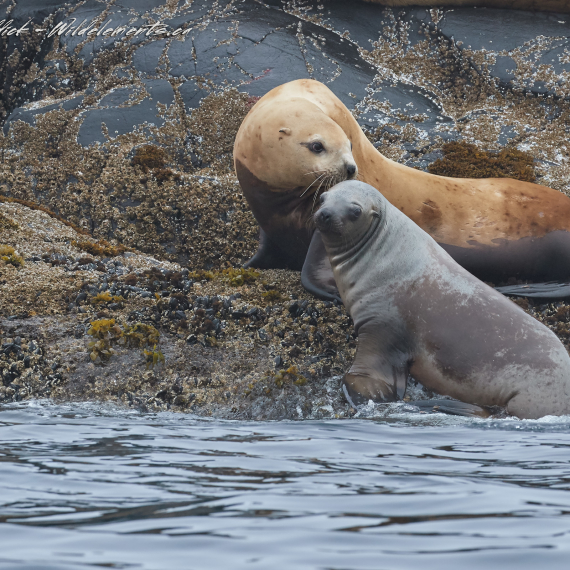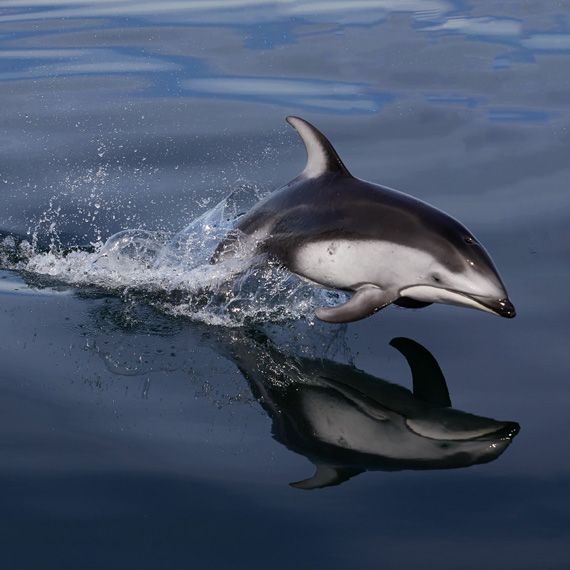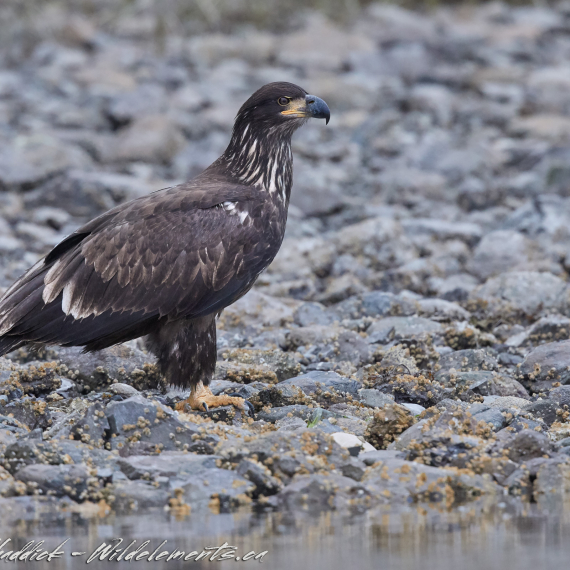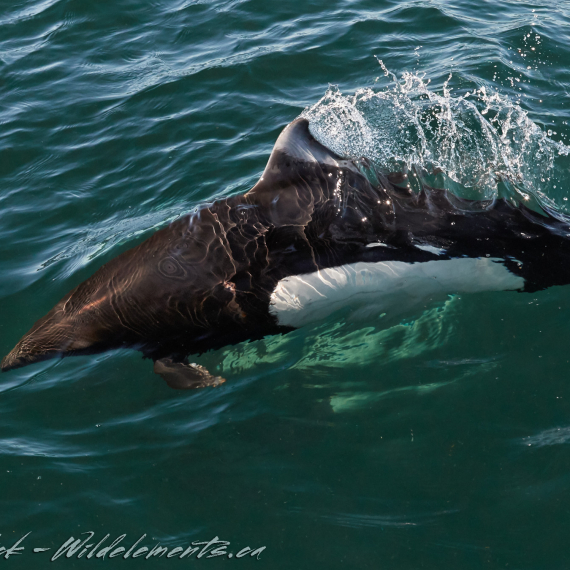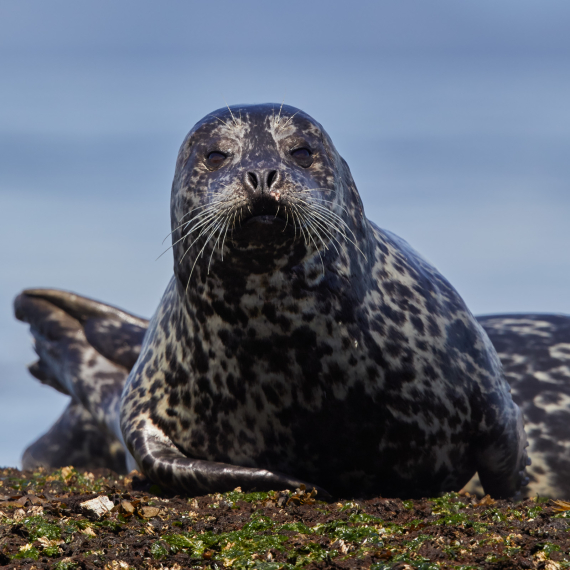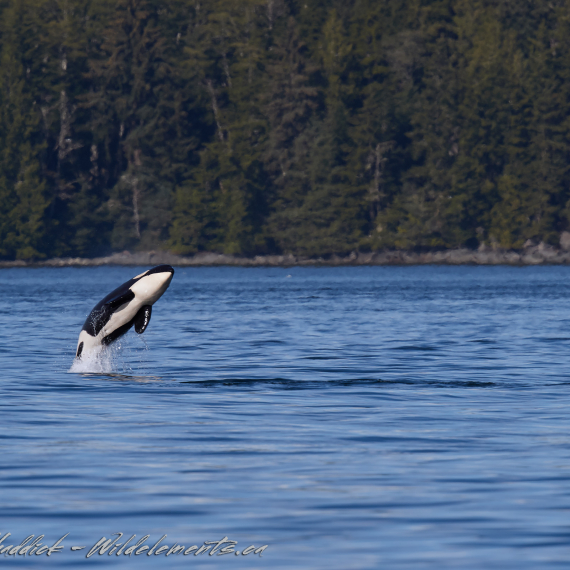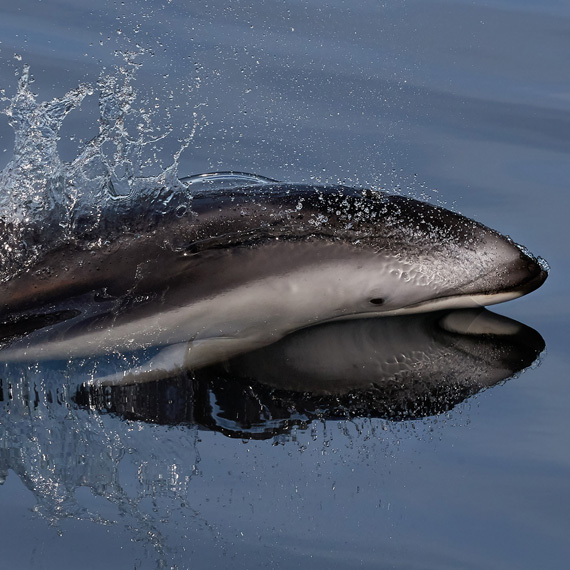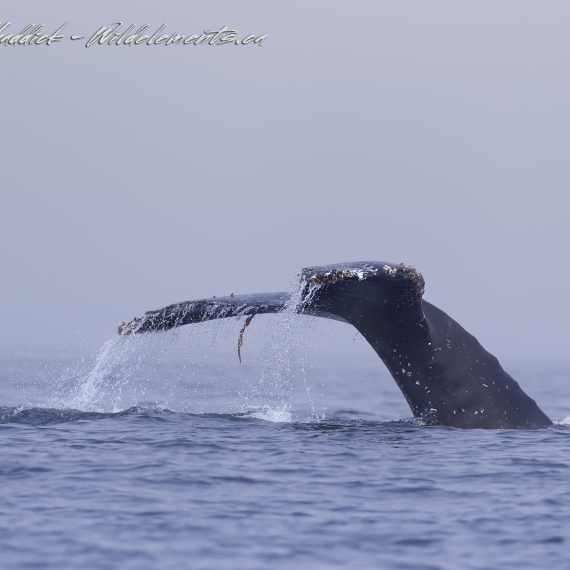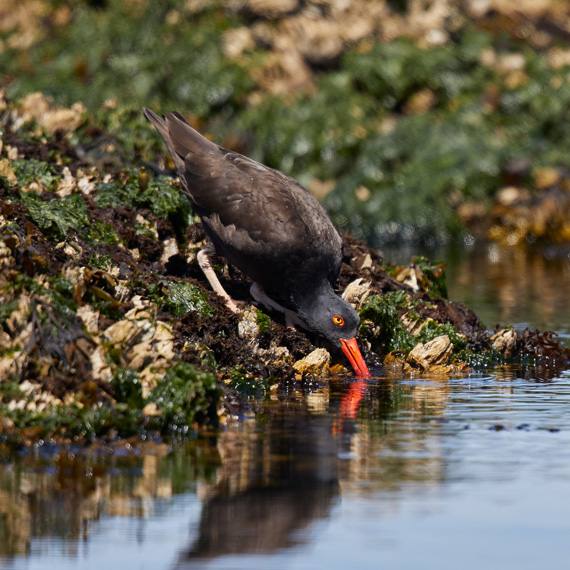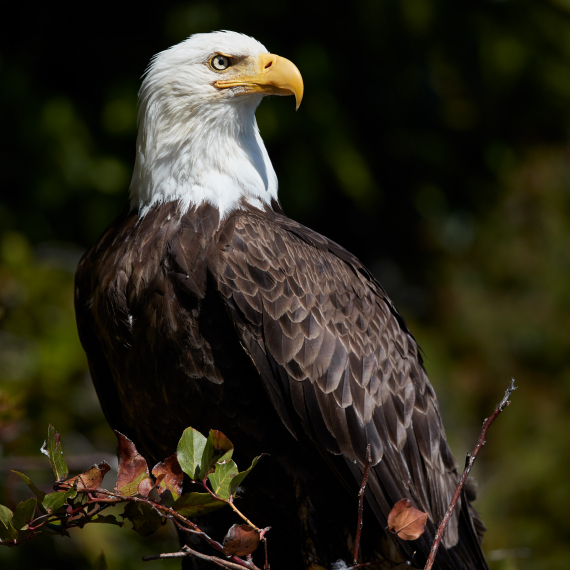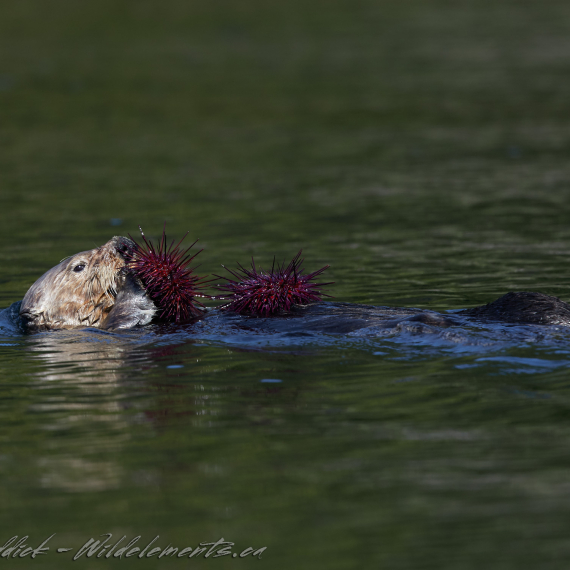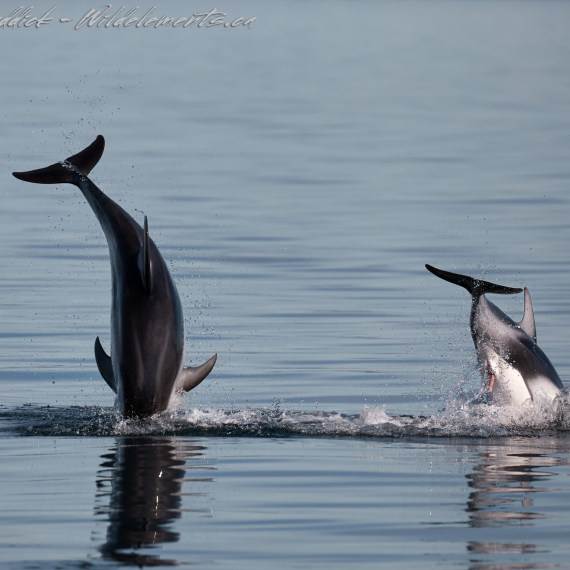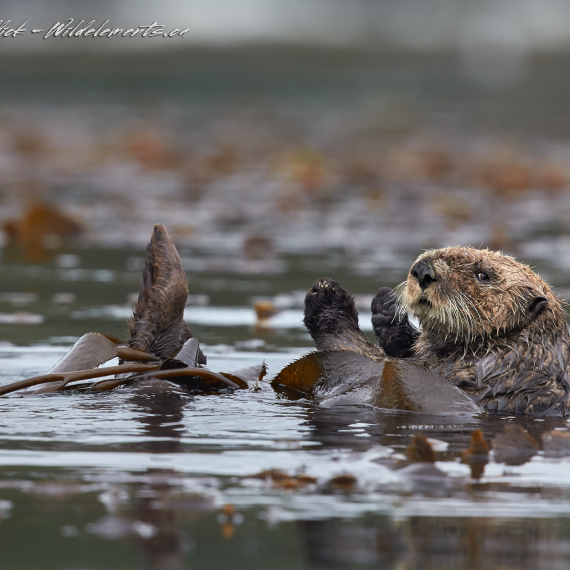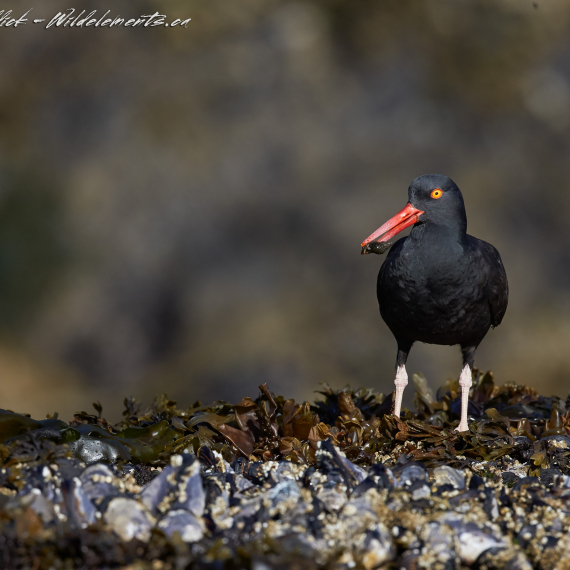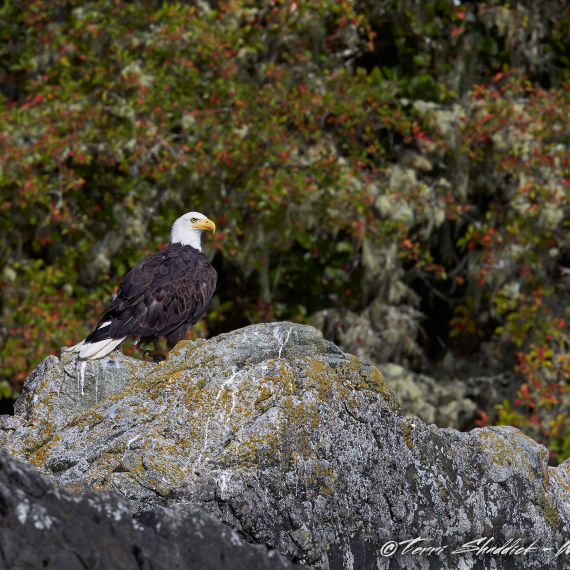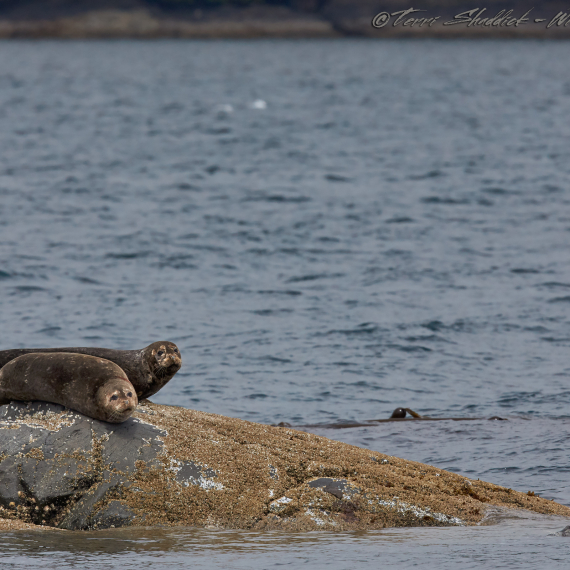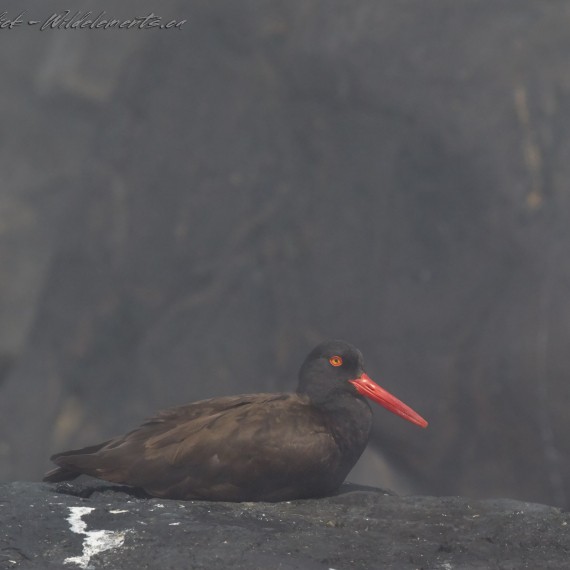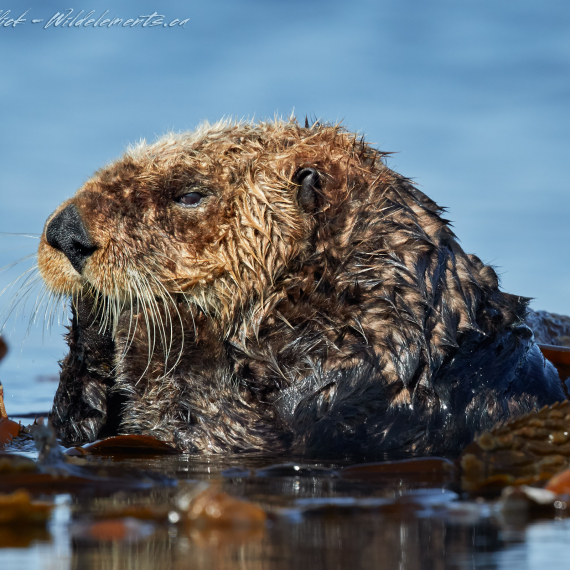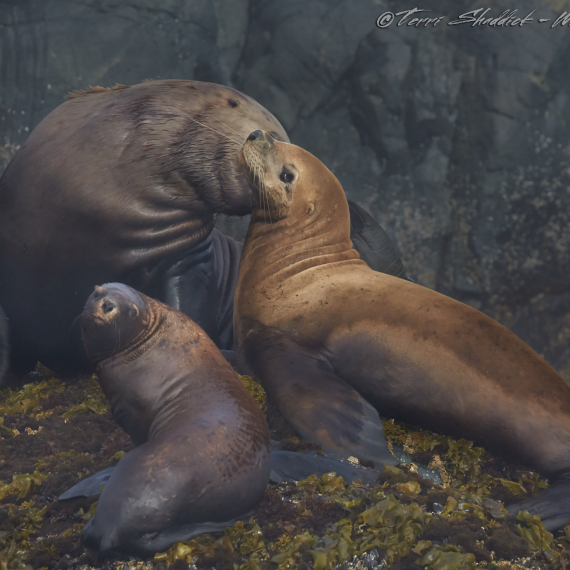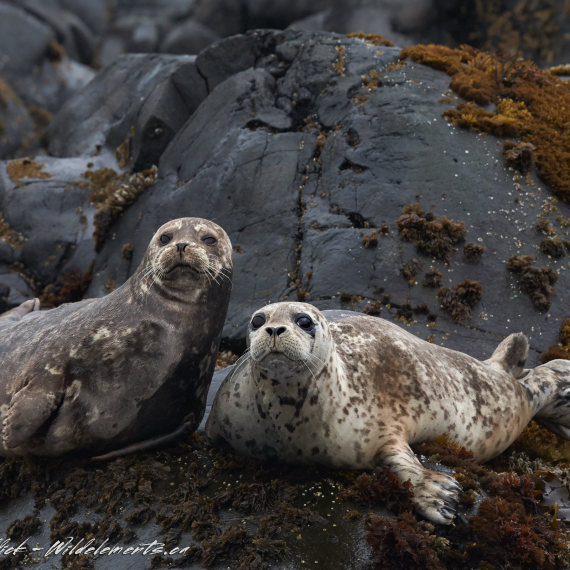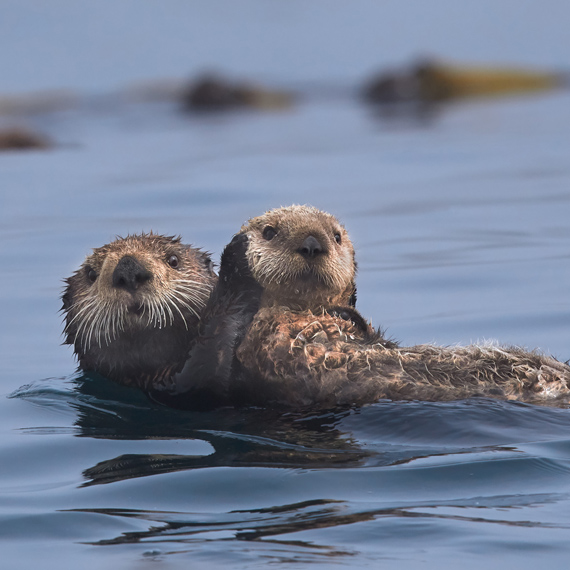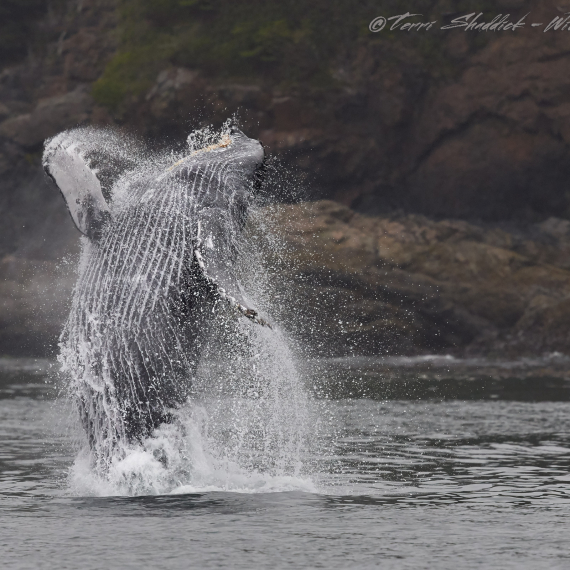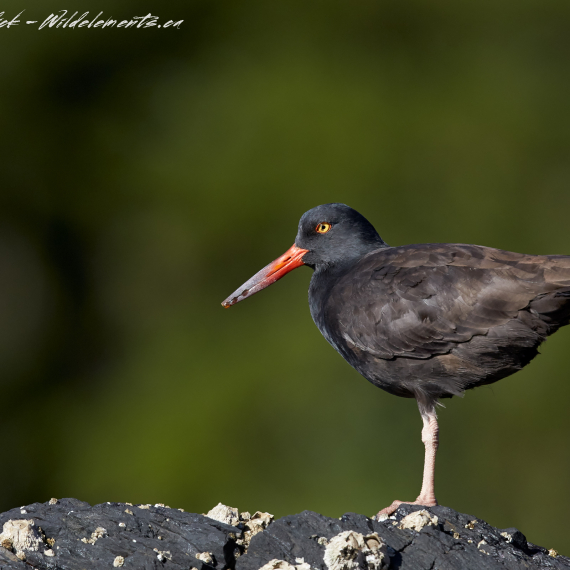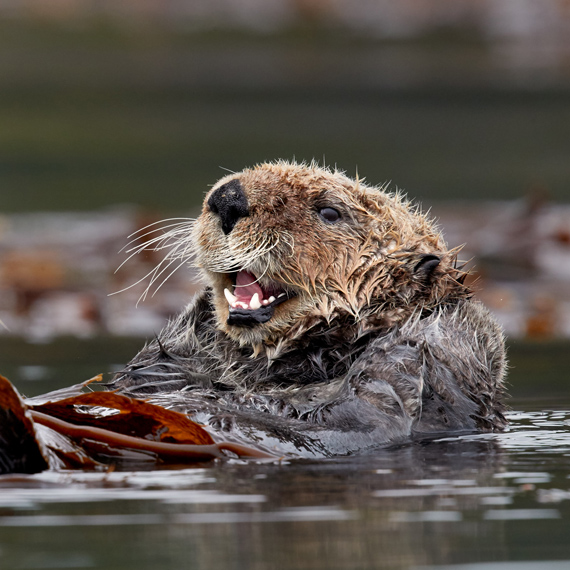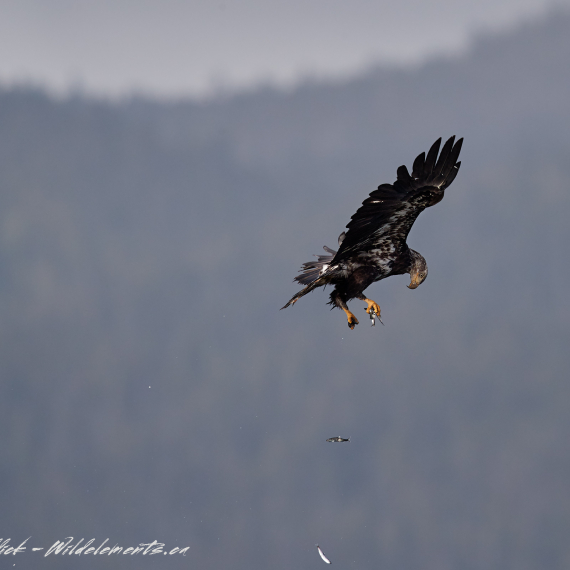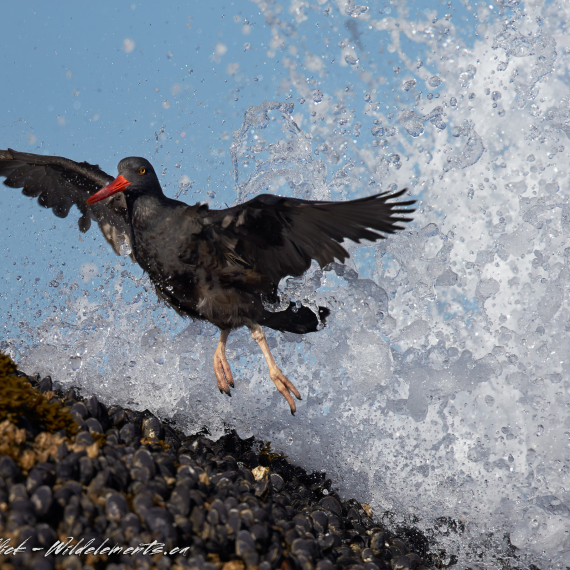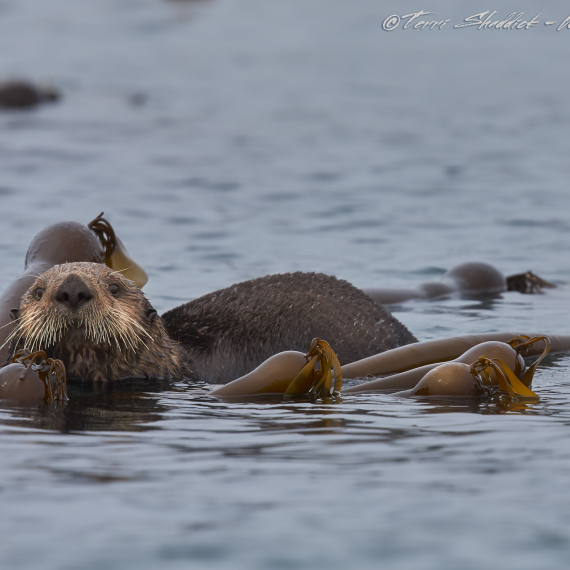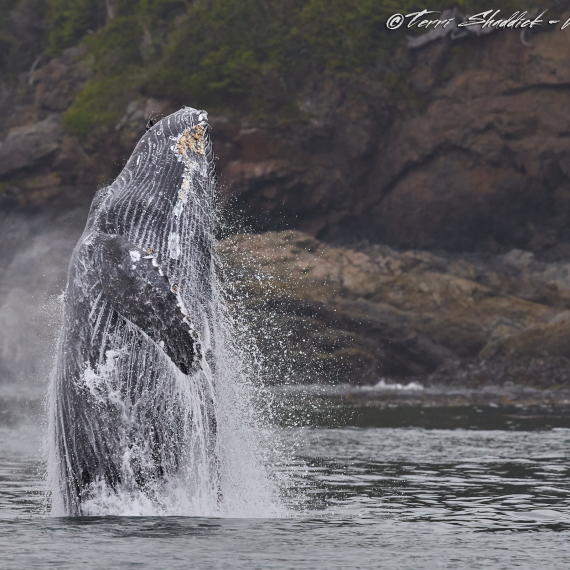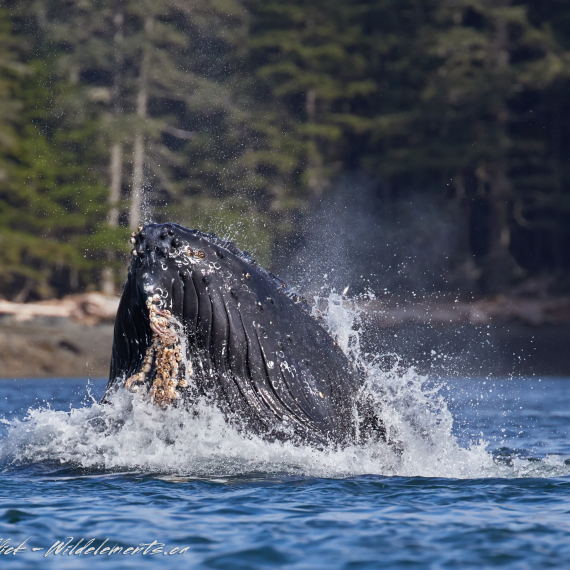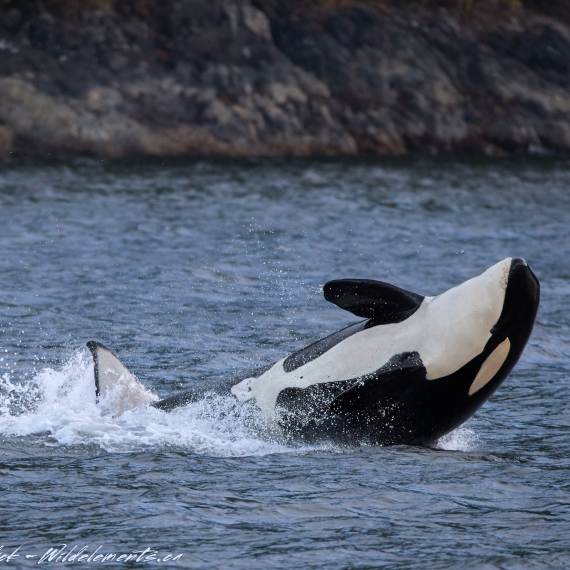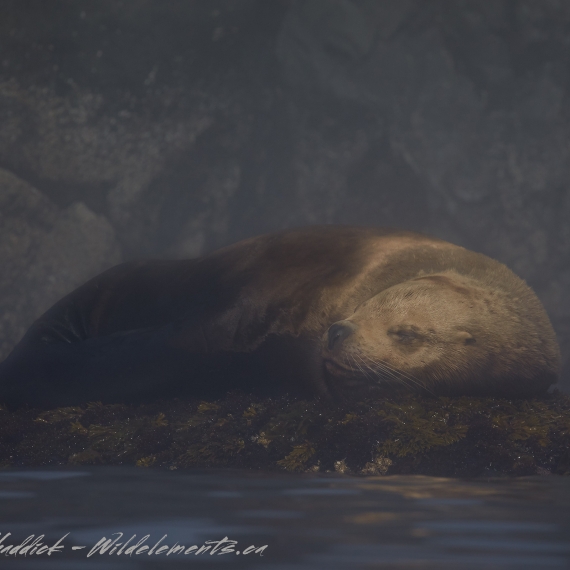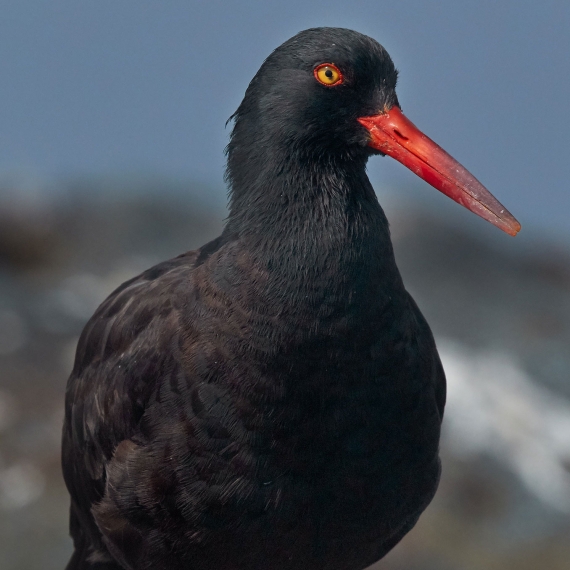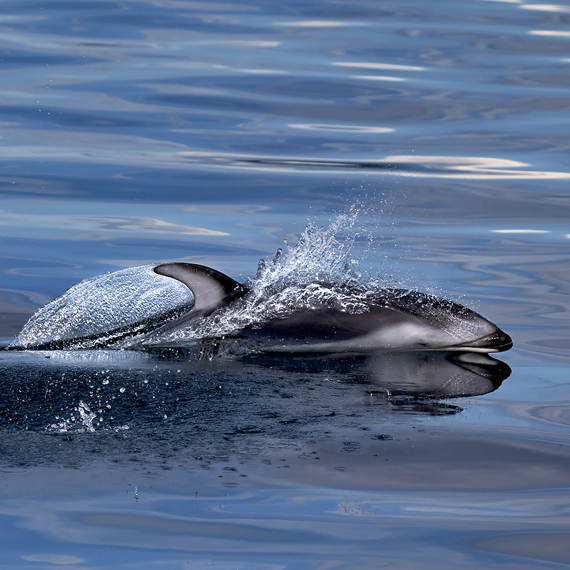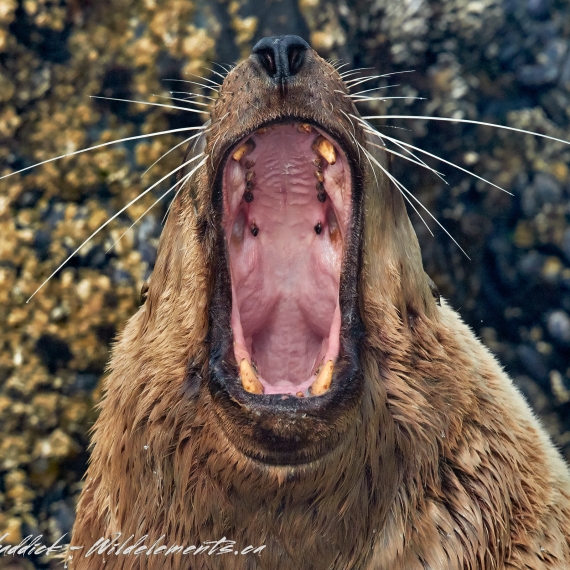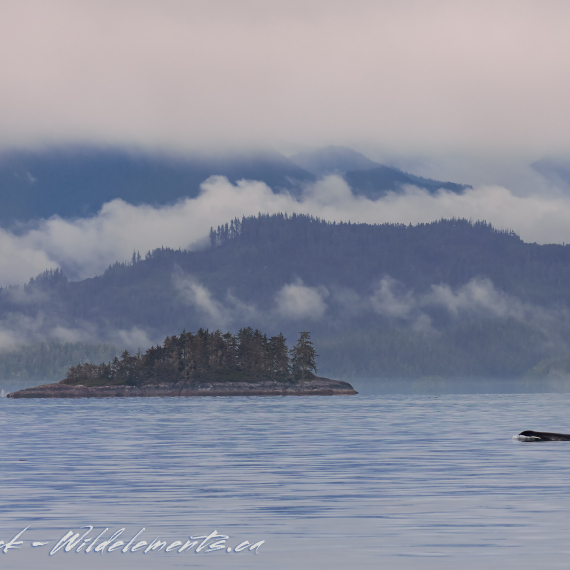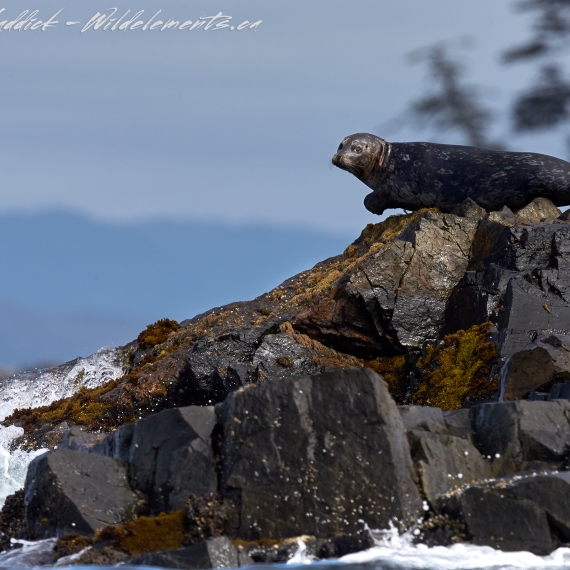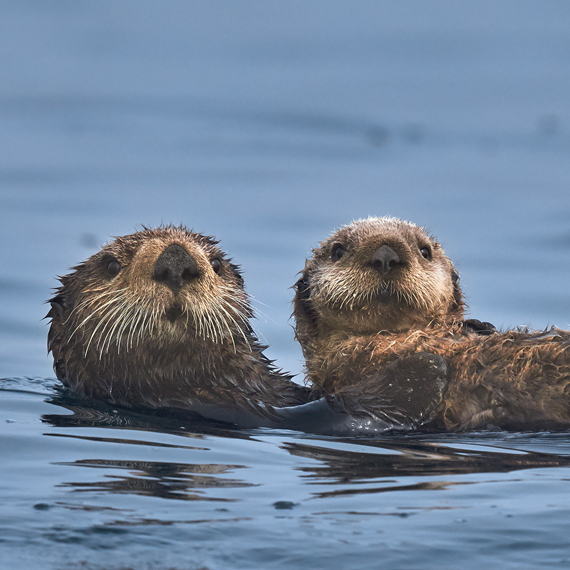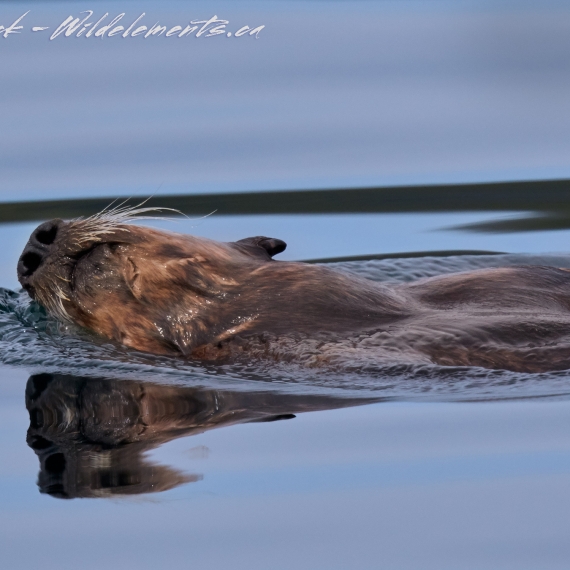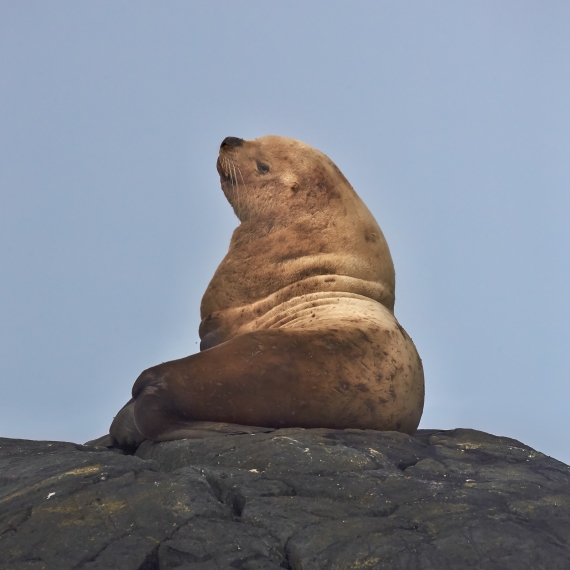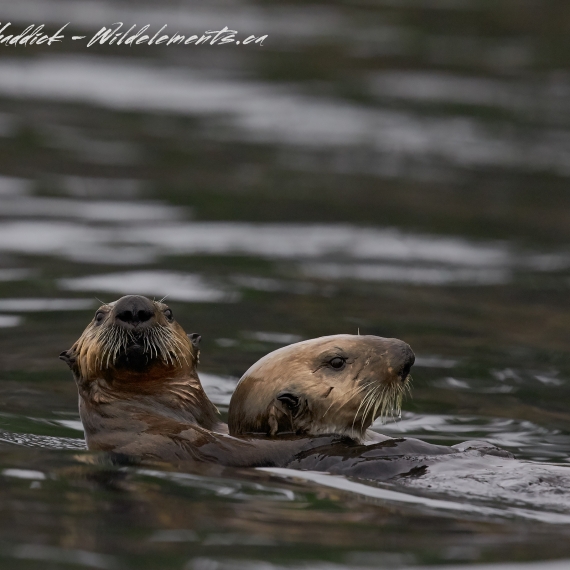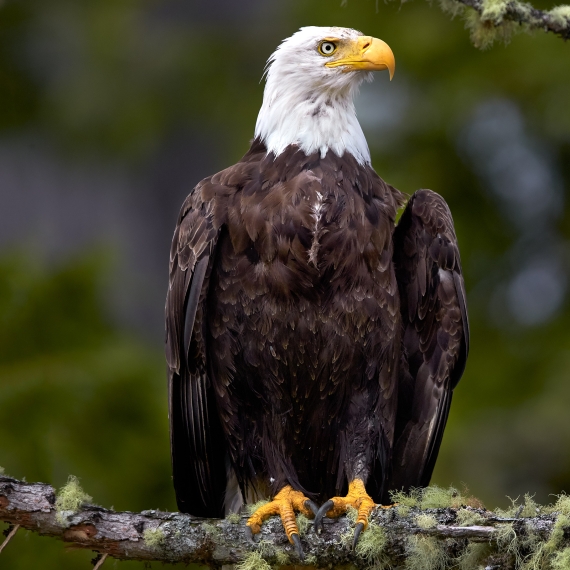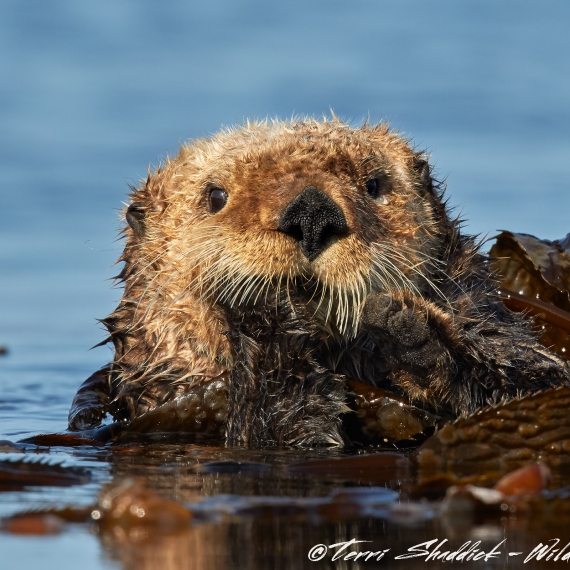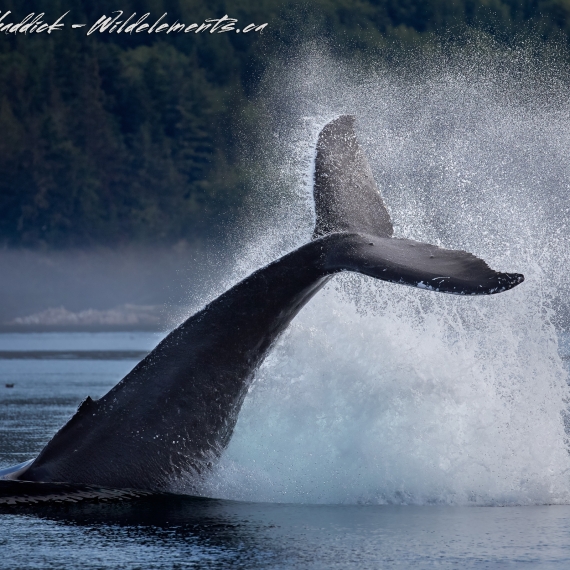Home | Marine Mammals | Mussel-Catcher
This little black bird that is common along the shores, and rocks, of the coast of British Columbia, is called an Oystercatcher. Despite their name, oysters actually make up a small portion of their diet, and they rarely eat them. Therefore for this image I decided to rename the bird the mussel-catcher, as it more commonly eats mussels than oysters.
If you look closely at the image you can see a mussel at the end of the end of the orange beak.
How can you not like photographing a bird that is so contrasting, the orange beak, and yellow eyes, and light coloured legs offsetting the black/browish feathers, and the natural light is really helping highlight that in this image. I’m headed back to the coast of British Columbia this summer to seek out Marine Mammals, and the shorebirds that call this area home, and hopefully I will get more shots of these guys.
This image is copyright © Terri Shaddick, if you are interested in using or purchasing this image, or any other images on my site, contact Terri Shaddick at [email protected].
Taken: August 17, 2016
Location: Johnstone Strait, British Columbia
Camera: Canon EOS 1D X
Lens: Canon EF 500mm f/4L IS II USM + 1.4x III Extender
Focal Length: 700mm
Aperture: f/9
ISO: 1600
Shutter Speed: 1/2500
The first thing that you might notice when checking out the camera specs of this image, is why the heck am I using a 1/2500 shutter speed. Well I wasn’t shooting from a tripod. Instead we were in rough waters, we had actually gone out in the zodiac looking for Sea Lions, which tend to use rock haul outs in rough waters. And since the waters were rough, and we had a lot of light, I bumped up the shutter speed. The second thing you might notice is the aperture. Because this image is pretty much full-frame, and I wanted to make sure that I got both the eye and end of beak in focus, I used a bigger aperture to make sure that they are all sharp. I did not use any exposure compensation in the field.
In post processing this image, I used three different exposure layers ranging from -0.54 to -0.14, with the background getting the darkest adjustment layer which really helps the bird stand out from the background. To increase the contrast in the feathers, I also used Lightzone tone mapper, and applied it to most of the image, but at decreased opacity for the background. I cropped the image by approximately 700 pixels.
About this Image
This little black bird that is common along the shores, and rocks, of the coast of British Columbia, is called an Oystercatcher. Despite their name, oysters actually make up a small portion of their diet, and they rarely eat them. Therefore for this image I decided to rename the bird the mussel-catcher, as it more commonly eats mussels than oysters.
If you look closely at the image you can see a mussel at the end of the end of the orange beak.
How can you not like photographing a bird that is so contrasting, the orange beak, and yellow eyes, and light coloured legs offsetting the black/browish feathers, and the natural light is really helping highlight that in this image. I’m headed back to the coast of British Columbia this summer to seek out Marine Mammals, and the shorebirds that call this area home, and hopefully I will get more shots of these guys.
This image is copyright © Terri Shaddick, if you are interested in using or purchasing this image, or any other images on my site, contact Terri Shaddick at [email protected].
Taken: August 17, 2016
Location: Johnstone Strait, British Columbia
Camera Specs
Camera: Canon EOS 1D X
Lens: Canon EF 500mm f/4L IS II USM + 1.4x III Extender
Focal Length: 700mm
Aperture: f/9
ISO: 1600
Shutter Speed: 1/2500
Capturing & Processing
The first thing that you might notice when checking out the camera specs of this image, is why the heck am I using a 1/2500 shutter speed. Well I wasn’t shooting from a tripod. Instead we were in rough waters, we had actually gone out in the zodiac looking for Sea Lions, which tend to use rock haul outs in rough waters. And since the waters were rough, and we had a lot of light, I bumped up the shutter speed. The second thing you might notice is the aperture. Because this image is pretty much full-frame, and I wanted to make sure that I got both the eye and end of beak in focus, I used a bigger aperture to make sure that they are all sharp. I did not use any exposure compensation in the field.
In post processing this image, I used three different exposure layers ranging from -0.54 to -0.14, with the background getting the darkest adjustment layer which really helps the bird stand out from the background. To increase the contrast in the feathers, I also used Lightzone tone mapper, and applied it to most of the image, but at decreased opacity for the background. I cropped the image by approximately 700 pixels.


